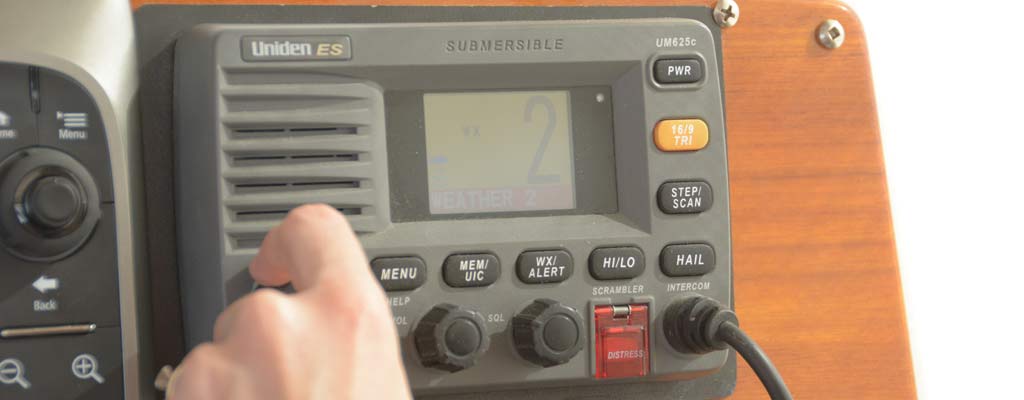The Basics of Marine Radio Use
To use your VHF, turn it on and pick a channel, set the squelch to the point where you don't hear any white noise, and begin talking. Things to remember when you are on the radio:
- Monitor channel 16 when you are not actively in conversation with someone else. While not required for recreational boaters, it is an unwritten rule for radio users.
- Don't tie up channel 16 or channel 9. If you are talking with someone, switch to a working channel so you are not keeping others from using channel 16 or 9. In some instances, the Coast Guard may even order you to switch channels if you are talking excessively on 16 or 9.
- A VHF radio is not a telephone. When you use your VHF, everyone tuned to that station in the area can hear you! Watch your language, and try to keep your conversations short and to the point so that others may use the channel.
- It is unlawful to intentionally transmit a false distress alert, or intentionally transmit a false alert without taking steps to cancel that alert.
Read More About This Topic
- Page 1: Marine Communications
- Page 3: Calling for Help?
- Foundation Findings: Low-Cost Marine Radios
VHF Marine Radio Channels
Most VHF radios on the market today have in excess of twenty-five usable channels. Aside from the U.S. channels there are also International and Canadian channels, all of which come standard with many of the newer units on the market. You won't be using the vast majority of channels on your VHF. However, channel 16 on your VHF radio is probably the most important.
Channel 16 is designated as the national distress, safety and calling frequency. All vessels should monitor this channel while underway.
When hailing other boats for routine communication, you'll need to hail them on 16 or 09, and then move to an available working channel, usually 68, 69, 71 or 72. Always remember to check for channels authorized for use in your area as well as any local restrictions.

